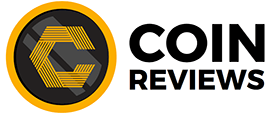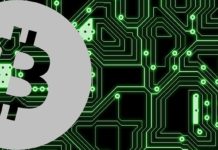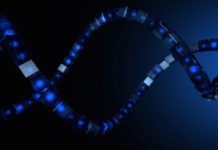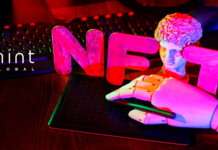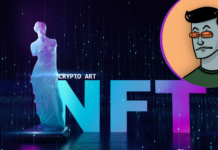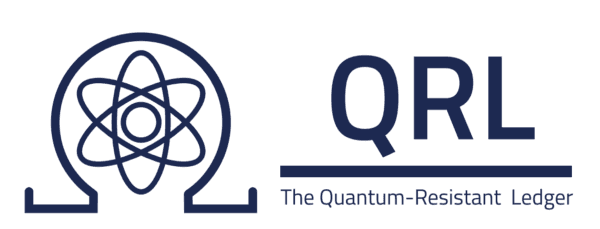
Conceptualized by Dr. Peter Waterland, Quantum Resistant Ledger ($QRL) is a cryptocurrency ledger that uses hash-based digital signatures (proof-of-stake algorithms) instead of proof-of-work algorithms.
Because of this, it is resistant to both quantum and classical computing attacks. QRL is one of the first blockchain-based ledger to use post-quantum cryptography technology. For this reason, it has generated a lot of interest among cryptocurrency enthusiasts and blockchain developers alike. The companies cryptocurrency $QRL is currently trading as an ERC20 token on various exchanges including Liqui, Tidex and the most popular Bittrex.
QRL plans to allow mining (Genesis block) in September 2017. The number of coins in the Genesis block and the final distribution, which will happen in 200 years, are 65 million and 105 million respectively.
What is Quantum Computing?
Quantum computing is basically the use of quantum computers to perform computer-related tasks. Quantum computers store information in quantum bits (qubits) instead of bits. It is important to note that a qubit can store multiple numbers at once (a zero, a one, both a zero and a one, or any other value between a zero and a one).
For this reason, a quantum computer can perform multiple calculations simultaneously. Put another way, a quantum computer can work in parallel, allowing it to solve complex mathematical problems involving factorization, such as “prime factors” of a large number. This means that quantum computing can break cryptographic protocols, including the ones used by blockchain networks.
How will Quantum Resistant Ledger help crypto currency eco systems in a post-quantum computing world?
The conventional encryption protocols used to protect blockchain networks including Elliptic Curve Digital Signature Algorithm or ECDSA, elliptical curve cryptography (ECC) and large prime number cryptography (RSA) are vulnerable to quantum computing.
More specifically, quantum computing would make it possible to reverse engineer private keys quickly, thereby rendering the aforementioned encryption protocols useless. This is where QRL comes in handy. QRL uses post-quantum cryptography technology, which means it is theoretically immune from quantum computing attacks.

Protecting Our Future: Quantum Computing Threats & Considerations
Let’s start with preparing for cyber-war scenarios.
So far, blockchain-based encryption algorithms such as ECDSA have been able to keep cybercriminals at bay because classical computers cannot break such algorithms. However, the introduction of quantum computing could potentially lead to a blockchain Armageddon because of the following threats:
1) Government Applications: Governments across the world are increasingly investing in post-quantum cryptography in order to protect their monetary systems, which are increasingly threatened by blockchain-based digital currencies. Put another way, quantum computing could help governments destabilize the blockchain ecosystem.
2) Business Applications: Quantum computing has a wide range of business applications. However, organizations that develop this technology are likely to monetize the technology by either selling it or leasing it to other parties. This could be a problem for blockchain networks, especially if the technology falls into the wrong hands.
3) Heists and Robbery: Quantum computing would make digital currency networks such as Ethereum and Bitcoin vulnerable to cybercriminals. More specifically, hackers can apply Shor’s algorithms to such networks and steal cryptocurrencies.
The items above are expanded on within a recent post on one of the QRL blogs.
Quantum Resistant Ledger’s ICO
During its presale in mid-2017, QRL created 65 million tokens. Out of these, it distributed 52 million tokens to contributors, with each token priced at $0.08. Generating over $1 million USD in BTC/ETH within the first seven days, the presale eventually hit the hard-cap of $4 million, causing QRL to cancel the public crowdsale. After the ICO, QRL distributed ERC20 tokens to its network members upon request. QRL plans to launch its own MainNet soon to allow its network members to swap their ERC20s for QRL’s independent protocol token at a 1:1 ratio.
Read their official press release to learn more.
QRL: Roadmap & Announcements
According to QRL’s roadmap featured on their website, the project began in August 2016 when Dr. Peter Waterland conceived the idea of a secure hash-based digital signature library to protect blockchain networks from quantum computing threats.
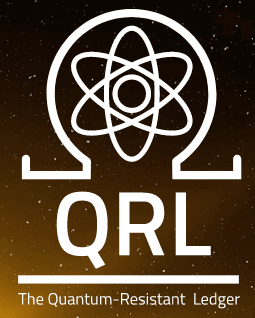
A month later, September 2016, Dr. Peter Waterland created a POW ledger based on Winternitz and Lamport one-time signatures, and Merkle signature scheme addresses. Then, with input from developers, post-quantum cryptographers, Dr. Peter Waterland wrote a whitepaper on QRL.
The whitepaper was published in November 2016. The QRL community designed a proof-of-stake algorithm (POS) in December 2016. In January 2017, the community designed a prototype node. The following month, February 2017, the community designed and launched the first iteration of the block explorer, followed by testing of POS algorithmic updates in March 2017.
Other key milestones in 2017 include the launch of the Alpha TestNet (April), public ICO (May), public TestNet (June) and genesis block (September). Other milestones on the roadmap include Ephemeral (October 2017 to 2018) and PQ secure digital identification (2018 to 2019).
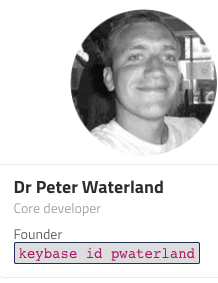
Executive Team Members
QRL’s executive team consists of the following members:
Dr. Peter Waterland (Founder and Core Developer) – Dr. Peter Waterland is a qualified medical doctor as well as an amateur coder with 20 years of coding experience.
Peter has been investing in Bitcoin since late 2012 and he is an early-stage ethereum investor.
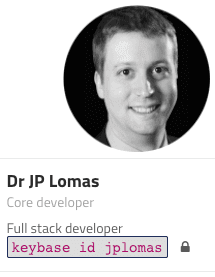
Peter developed the hash-based digital signatures underlying QRL in mid-2016.
Dr. JP Lomas (Full Stack Developer) – Similar to Peter, Dr. JP Lomas has a background in medicine, with particular expertise in healthcare management.
At QRL, he serves as the full stack developer. His duties at QRL include planning and executing the token migration process, backend admin scripting, blockchain explorer developer.
Other key members of the executive team include Kaushal Kumar Singh (Blockchain Developer), Leon Groot Bruinderink (PhD student post-quantum cryptography), and Michael Kolenbrander (Technical Solution Architect).
Internal Drama, Challenges, & Obstacles
Shortly after QRL’s successful ICO, disagreement arose between the then Operation’s Manager Jomari Peterson, and the founder Dr. Peter Waterland. Jomari accused Peter of, among other things, misappropriating funds, failing to deliver on the QRL’s commitments to the QRL community and contributors and preventing Jomari from performing his work duties. On his part, Peter accused Jomari of making unrealistic demands and greed, including demanding a huge QRL percentage, contrary to their original agreement.
Both parties eventually hired lawyers to represent them in the dispute. Immediately after the drama started, the value of QRL dropped about 30%.
However, the token has recouped most of those losses over the past few weeks. Given the recent gains, it seems Jomari’s departure was a good thing for QRL despite the drama. Overall, the long-term outlook is positive and optimistic.
$QRL Breakout #Bittrex pic.twitter.com/bhWpNpIsRs
— CryptoCadet[NO2X] (@BedirTurhan) September 1, 2017
$QRL Coin – Should You Invest?
The QRL is essentially a long-term investment because it is reliant on the rise of quantum computing, which is likely. Put another way, it is a potentially rewarding long-term investment.
Quantum Resistant Ledger: Movement & Community
The QRL community is a vibrant with various communication channels including:
Slack: http://slack.theqrl.org/
Twitter: https://twitter.com/qrledger
Reddit: https://www.reddit.com/r/QRL/
Today’s Vision, Protecting Tomorrow’s Realities
We’re optimistic on the future of the $QRL token. We love their management team. Despite recent challenges, Jomari Peterson’s departure appears to be for the better where a tremendous weight has been lifted off the shoulders of the current management team.
QRL is a bold, ambitious project, which someone must get behind and support. QRL recognized the opportunity to protect against quantum computing threats as it relates to blockchain and cryptocurrency applications and seized it.

